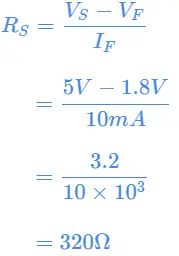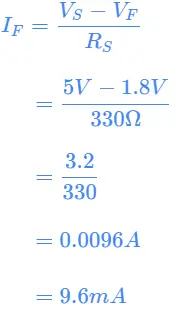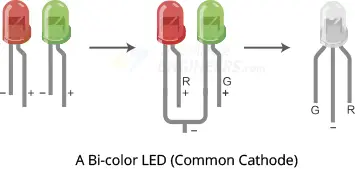Light Emitting Diode
From: https://lastminuteengineers.com/light-emitting-diode-led/
Light Emitting Diode (LED)
LEDs are everywhere – in our phones, in our cars, and even in our homes.
Whenever an electronic device lights up, there is a good chance that an LED
is behind it.
LEDs are like tiny lightbulbs. Low energy consumption, small size, rapid
switching and long lifespan makes them ideal for mobile devices and other
low-power applications.
LED stands for Light Emitting Diode. They are a special type of diode that
convert electrical energy into light. They have very similar electrical
characteristics to a normal PN junction diode. That’s why the symbol of
LED is similar to the normal PN junction diode except that it contains
arrows pointing away from the diode indicating that light is being emitted
by the diode.
 led symbol
led symbol
LED Construction
LEDs are so common, they come in a huge variety of shapes, sizes and colors.
The LEDs you are most likely to use are the standard through hole LEDs with
two legs. Following figure shows the parts of it.
 led construction
The construction of an LED is very different from an ordinary diode. The PN
junction of an LED is surrounded by a transparent, rigid plastic epoxy resin
shell.
Ezoic
The shell is constructed in such a way that photons of light emitted by the
junction are focused upward through the domed top of the LED, which itself
acts like a lens. This is why the emitted light appears brightest on top of
the LED.
Ezoic
Just as in an ordinary diode, the positive side of the LED is called the
Anode, while the negative side of the LED is called the Cathode. The cathode
is usually indicated by having a shorter lead than the anode. Not only this,
the outside of the plastic case typically has a flat spot or notch which can
also indicate the cathode side of the LED.
Not all LEDs are hemispherical in shape, some are rectangular while some are
cylindrical, but they are mostly constructed in the same way.
led construction
The construction of an LED is very different from an ordinary diode. The PN
junction of an LED is surrounded by a transparent, rigid plastic epoxy resin
shell.
Ezoic
The shell is constructed in such a way that photons of light emitted by the
junction are focused upward through the domed top of the LED, which itself
acts like a lens. This is why the emitted light appears brightest on top of
the LED.
Ezoic
Just as in an ordinary diode, the positive side of the LED is called the
Anode, while the negative side of the LED is called the Cathode. The cathode
is usually indicated by having a shorter lead than the anode. Not only this,
the outside of the plastic case typically has a flat spot or notch which can
also indicate the cathode side of the LED.
Not all LEDs are hemispherical in shape, some are rectangular while some are
cylindrical, but they are mostly constructed in the same way.
 types of leds Image courtesy: wikipedia.org
types of leds Image courtesy: wikipedia.org
LED Working
Like an ordinary diode, the LED operates only in forward bias condition. When
the LED is forward biased, the free electrons cross the PN junction and
recombine with holes. Since these electrons fall from a higher to a lower energy
level, they radiate energy in the form of photons (light).
In ordinary diodes, this energy is radiated as heat while in an LED, energy is
radiated as light. This effect is called Electroluminescence.
 led working
led working
LED Colors
Light emitting diodes are available in a wide range of colors with the most
common being red, green, yellow, blue, orange, white and infrared (invisible)
light.
Unlike ordinary diodes that are made of germanium or silicon, LEDs are made of
elements such as gallium, arsenic, and phosphorus. By mixing these elements
together in different proportions, a manufacturer can produce LEDs that radiate
different colors as shown in the table below.
| Color
| Wavelength
(nm)
| Forward Voltage
(V)
| Material
|
| Ultraviolet | <400 | 3.1-4.4 | Aluminium nitride(ALN)
Aluminium gallium nitride (AIGaN)
|
| Violet | 400-450 | 2.8-4.0 | Indium gallium nitride (InGaN)
|
| Blue | 450-500 | 2.5-3.7 | Indium gallium nitride (InGaN)
Silicon carbide (SiC)
|
| Green | 500-570 | 1.9-4.0 | Gallium phosphide (GaP)
Aluminium gallium phosphide (ALGaP)
|
| Yellow | 570-590 | 2.1-2.2 | Gallium arsenide phosphide (GaAsP)
gallium phosphide (GaP)
|
| Orange | 590-610 | 2.0-2.1 | Gallium arsenide phosphide(GaAsP)
gallium phosphide (GaP)
|
| Red | 610-760 | 1.6-2.0 | Aluminium gallium arsenide (AIGaAs)
Gallium arsenide phosphide (GaAP)
Gallium phosphide (GaP)
|
| Infrared | >760 | >1.9 | Gallium arsenide(GaAs)
Aluminium gallium arsenide (ALGaAs)
|
The actual color of an LED is determined by the wavelength of light emitted,
which in turn is determined by the actual semiconductor material used to
make the diode.
Therefore the color of the light emitted by an LED is NOT determined by the
color of the body of the LED. It just enhances the light output and
indicates its color when it is not illuminated.
LED Voltage and Current
For most low-power LEDs, the typical voltage drop is from 1.2V to 3.6V for
currents between 10mA to 30mA. The exact voltage drop will of course depend upon
the semiconductor material used, color, tolerance, along with other factors.
As the LED is basically a diode, its IV characteristics curves can be plotted
for each color as shown below.
 led color versus forward voltage graph
Unless otherwise specified, you should consider a nominal drop of 2V and forward
current 20mA.
led color versus forward voltage graph
Unless otherwise specified, you should consider a nominal drop of 2V and forward
current 20mA.
LED Brightness
The brightness of an LED depends directly on how much current it draws. The more
current it draws, the brighter the LED will be.
You can control the brightness of an LED by controlling the amount of current
through it.
The Current Limiting resistor
If you connect an LED directly to a battery or power supply it will try to
dissipate as much power as possible, and, it will destroy itself almost instantly.
Therefore it is important to limit the amount of current flowing through the
LED. For this, we use resistors. The resistor limits the flow of electrons
in the circuit and prevents the LED from trying to draw too much current.
The current-limiting resistor is placed between LED and voltage source in this
way:
 basic led circuit
In above circuit, the resistor has a node voltage of VS on the left and a node
voltage of VF on the right, the voltage across the resistor is the difference
between the two voltages.
By applying Ohm’s law, the current-limiting resistor is calculated as:
basic led circuit
In above circuit, the resistor has a node voltage of VS on the left and a node
voltage of VF on the right, the voltage across the resistor is the difference
between the two voltages.
By applying Ohm’s law, the current-limiting resistor is calculated as:
 led_1
led_1
Basic Example
Consider a red LED with a forward voltage drop of 1.8V is connected to a 5V
DC power supply. Calculate the value of the current-limiting resistor
required to limit the forward current to approximately 10mA.
 led circuit basic example
led circuit basic example
Solution:
Using the formula above, the current-limiting resistor is:
 led_2
This suggests that we will need a 320Ω resistor to limit the current to
10mA. But 320Ω is not a standard preferred value, so we will need to choose
the next highest value, which is 330Ω.
Let’s recalculate the forward current for the 330Ω current-limiting resistor:
led_2
This suggests that we will need a 320Ω resistor to limit the current to
10mA. But 320Ω is not a standard preferred value, so we will need to choose
the next highest value, which is 330Ω.
Let’s recalculate the forward current for the 330Ω current-limiting resistor:
 led_3
We got a new forward current value of 9.6mA which is fine.
led_3
We got a new forward current value of 9.6mA which is fine.
Multi-color LEDs
Most LEDs produce only one output of colored light. However, multi-color LEDs
are now available that can produce a range of different colors from within a
single device. These actually have several LEDs fabricated in a single package.
RGB LEDs
At first glance, RGB (Red, Green, Blue) LEDs look just like regular LEDs,
however, inside the usual LED package, there are actually three LEDs, one red,
one green and yes, one blue. By controlling the intensity of each of the
individual LEDs you can mix pretty much any color you want.
 a common cathode rgb led
The RGB LED has four pins: one for each color, and a common pin. On some,
the common pin is the anode, and on others, it’s the cathode.
a common cathode rgb led
The RGB LED has four pins: one for each color, and a common pin. On some,
the common pin is the anode, and on others, it’s the cathode.
Bi-Color LEDs
Unlike RGB LED, Bi-color LED lacks blue LED inside the LED package.
Typically, there are only two LEDs, one red and one green. By controlling
the intensity of each of the individual LEDs you can mix only shades of Red
and Green only.
 a common cathode bicolor led
The Bi-color LED has three pins: one for each color, and a common pin. Similar
to RGB LED, On some, the common pin is the anode, and on others, it’s the cathode.
a common cathode bicolor led
The Bi-color LED has three pins: one for each color, and a common pin. Similar
to RGB LED, On some, the common pin is the anode, and on others, it’s the cathode.
 led symbol
led symbol
 led construction
The construction of an LED is very different from an ordinary diode. The PN
junction of an LED is surrounded by a transparent, rigid plastic epoxy resin
shell.
Ezoic
The shell is constructed in such a way that photons of light emitted by the
junction are focused upward through the domed top of the LED, which itself
acts like a lens. This is why the emitted light appears brightest on top of
the LED.
Ezoic
Just as in an ordinary diode, the positive side of the LED is called the
Anode, while the negative side of the LED is called the Cathode. The cathode
is usually indicated by having a shorter lead than the anode. Not only this,
the outside of the plastic case typically has a flat spot or notch which can
also indicate the cathode side of the LED.
Not all LEDs are hemispherical in shape, some are rectangular while some are
cylindrical, but they are mostly constructed in the same way.
led construction
The construction of an LED is very different from an ordinary diode. The PN
junction of an LED is surrounded by a transparent, rigid plastic epoxy resin
shell.
Ezoic
The shell is constructed in such a way that photons of light emitted by the
junction are focused upward through the domed top of the LED, which itself
acts like a lens. This is why the emitted light appears brightest on top of
the LED.
Ezoic
Just as in an ordinary diode, the positive side of the LED is called the
Anode, while the negative side of the LED is called the Cathode. The cathode
is usually indicated by having a shorter lead than the anode. Not only this,
the outside of the plastic case typically has a flat spot or notch which can
also indicate the cathode side of the LED.
Not all LEDs are hemispherical in shape, some are rectangular while some are
cylindrical, but they are mostly constructed in the same way.
 types of leds Image courtesy: wikipedia.org
types of leds Image courtesy: wikipedia.org
 led working
led working
 led color versus forward voltage graph
led color versus forward voltage graph
 basic led circuit
In above circuit, the resistor has a node voltage of VS on the left and a node
voltage of VF on the right, the voltage across the resistor is the difference
between the two voltages.
By applying Ohm’s law, the current-limiting resistor is calculated as:
basic led circuit
In above circuit, the resistor has a node voltage of VS on the left and a node
voltage of VF on the right, the voltage across the resistor is the difference
between the two voltages.
By applying Ohm’s law, the current-limiting resistor is calculated as:
 led_1
led_1
 led circuit basic example
led circuit basic example
 led_2
This suggests that we will need a 320Ω resistor to limit the current to
10mA. But 320Ω is not a standard preferred value, so we will need to choose
the next highest value, which is 330Ω.
Let’s recalculate the forward current for the 330Ω current-limiting resistor:
led_2
This suggests that we will need a 320Ω resistor to limit the current to
10mA. But 320Ω is not a standard preferred value, so we will need to choose
the next highest value, which is 330Ω.
Let’s recalculate the forward current for the 330Ω current-limiting resistor:
 led_3
We got a new forward current value of 9.6mA which is fine.
led_3
We got a new forward current value of 9.6mA which is fine.
 a common cathode rgb led
The RGB LED has four pins: one for each color, and a common pin. On some,
the common pin is the anode, and on others, it’s the cathode.
a common cathode rgb led
The RGB LED has four pins: one for each color, and a common pin. On some,
the common pin is the anode, and on others, it’s the cathode.
 a common cathode bicolor led
The Bi-color LED has three pins: one for each color, and a common pin. Similar
to RGB LED, On some, the common pin is the anode, and on others, it’s the cathode.
a common cathode bicolor led
The Bi-color LED has three pins: one for each color, and a common pin. Similar
to RGB LED, On some, the common pin is the anode, and on others, it’s the cathode.